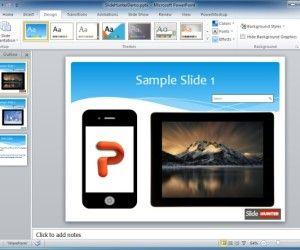Whether you work professionally or as a student, Microsoft PowerPoint is probably your first choice of tools for presenting ideas. Given the scope of features and capabilities Microsoft PowerPoint provides, that is an excellent choice.
With this software, you can deliver important information in a concise, understandable format while demonstrating it in an attention-grabbing manner. But no matter the circumstances and goal of your presentation, ensuring their security is non-negotiable.
Why is that, and how you can keep your PowerPoint presentations safe from unauthorized access and data breaches? Let’s unpack that and explore five ways to secure sensitive information from malicious activities.
Why PowerPoint Presentation Security Matters
First things first, creating a presentation can take days or even weeks of research, which would be a shame to lose carelessly. But more importantly, presentations of greater significance may include key metrics and confidential data. So, if left unprotected, all of this effort and sensitive information could be revealed to competitors, cybercriminals, or other unauthorized parties.
More importantly, with privacy legislation like GDPR or HIPAA, each organization is under a whole lot of pressure to protect the information they collect under any circumstances. A leak of such data can not only make you look irresponsible, but also signal to stakeholders, clients, partners, or anyone else involved that your organization is untrustworthy when it comes to handling sensitive data. And, let’s face it, the worst-case scenario isn’t just a loss of trust—it’s fines and legal consequences.
This is why knowing the significance of PowerPoint presentation security is essential. By prioritizing it, you will be able to protect sensitive data as well as maintain a good reputation among the people you work with. So, let’s go over the steps you should take to ensure presentation security and immunity to data breaches.
1. Encrypt Your Presentation
The first step to protecting your presentation should be encrypting it with a password. To do so, follow these steps:
- open your presentation in PowerPoint and click on “File”;
- then, select “Info”;
- click on “Protect Presentation,” then “Encrypt with Password”;
- in the opened box, type the preferred password and press “OK.”
With just a few steps, your PowerPoint presentation is encrypted and much more secure. Keep in mind, though, that Microsoft can lock you out of accessing the file if you type in an incorrect password.
2. Set Strong Passwords
More often than not, presentations include additional sources of information presented as hyperlinks or embedded documents stored in password-protected locations. If your presentation isn’t encrypted and gets into the hands of malicious actors, they might attempt to log into those files and corrupt, destroy, or steal data in them. In cases like this, using a Windows password manager is a no-brainer.
Password managers can save you a lot of time and energy while ensuring your online security with little effort. These tools create complex passwords, store them on servers, and make them easily reachable whenever you need to access your Windows or other accounts. Even during presentations, you can quickly log in to the embedded files with zero difficulty and disturbance.
With so many password manager options in the market, you might want to check out some Reddit threads about the best password managers before purchasing one.
3. Restrict Access
Just like you can encrypt your presentation, Microsoft PowerPoint also provides an option to restrict access to it.
Suppose you’re the only one working on the presentation. In that case, you may set the “Always Open Read-Only” option to stop others from making changes to the document, whether accidentally or intentionally. The “Restrict Access” option lets you specify who can read, copy, and edit the document.
4. Add Watermarks
There might be cases when your presentation is so great that peers, colleagues, or clients are tempted to reuse it without informing you or asking for permission. In such situations, you should add watermarks to all your slides and clearly indicate that your presentation cannot be used elsewhere.
Of course, this won’t automatically stop unauthorized use, but it will shed some light to your audience that the information you have collected is meant only for internal discussion, and it’s both morally and legally wrong to present it anywhere else.
5. Use Safe File Sharing Platforms
Sharing your presentations securely should also be considered when working on an important project. While there are many file-sharing platforms on the internet, not all of them will suit your preferences and the safety measures of your organization.
Every presentation-sharing platform has different levels of encryption, such as symmetric methods, and some are not enough to comply with data protection laws. Your best shot would be to opt for cloud services with restricted permissions and encryption, so only you can view and control the data access.
Secure Your Microsoft PowerPoint Presentations Effectively
Keeping your presentations secure is critical for maintaining a good reputation, guarding sensitive data, and avoiding legal ramifications. So, encrypt your presentations, use strong passwords, restrict unauthorized access, and add watermarks to protect your valuable data from bad actors. Additionally, ensure you choose secure online sharing platforms that give you full control over who can access your presentation. By taking these precautions, you’ll not only protect your work but also set the stage for creating impactful presentations.



